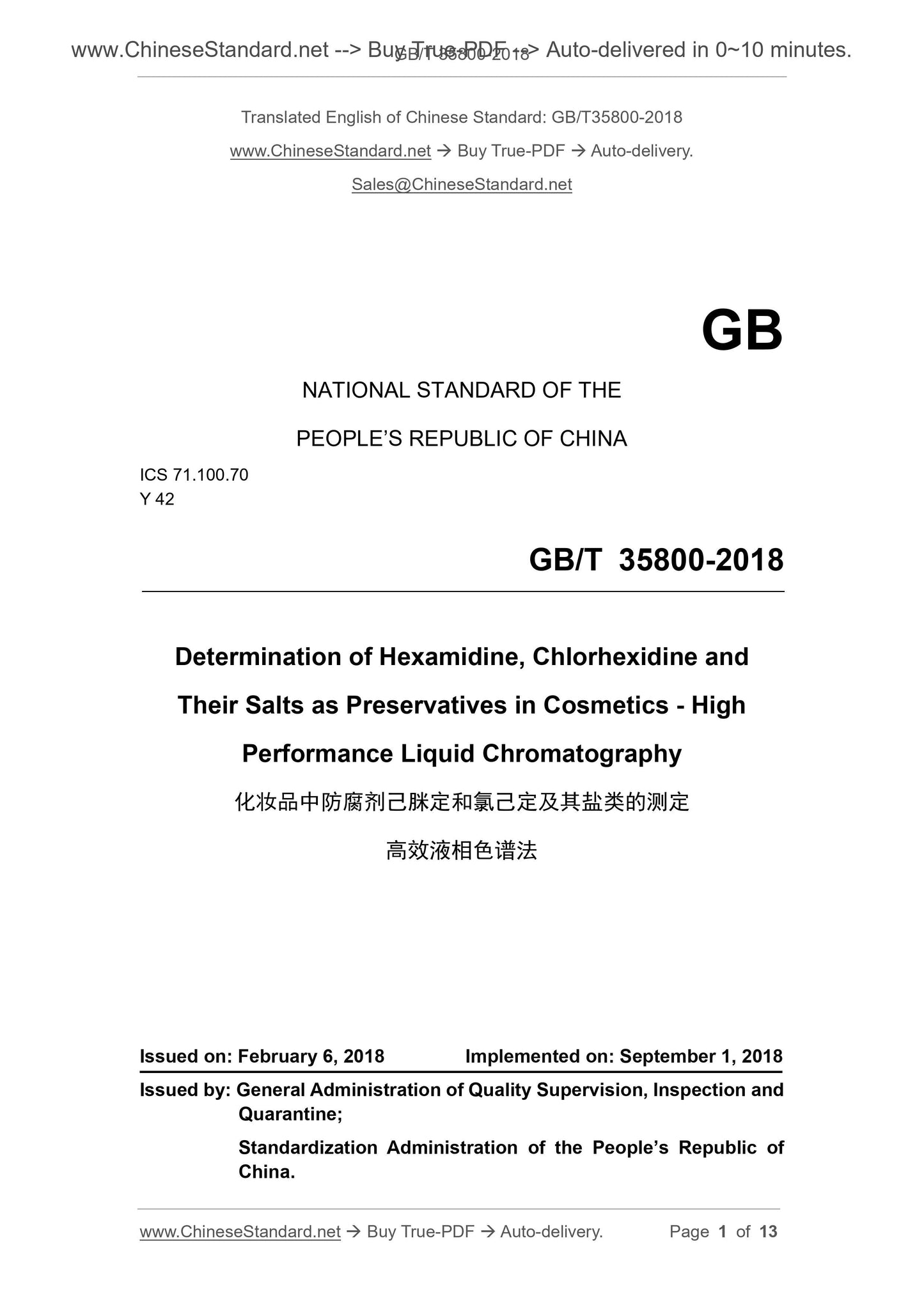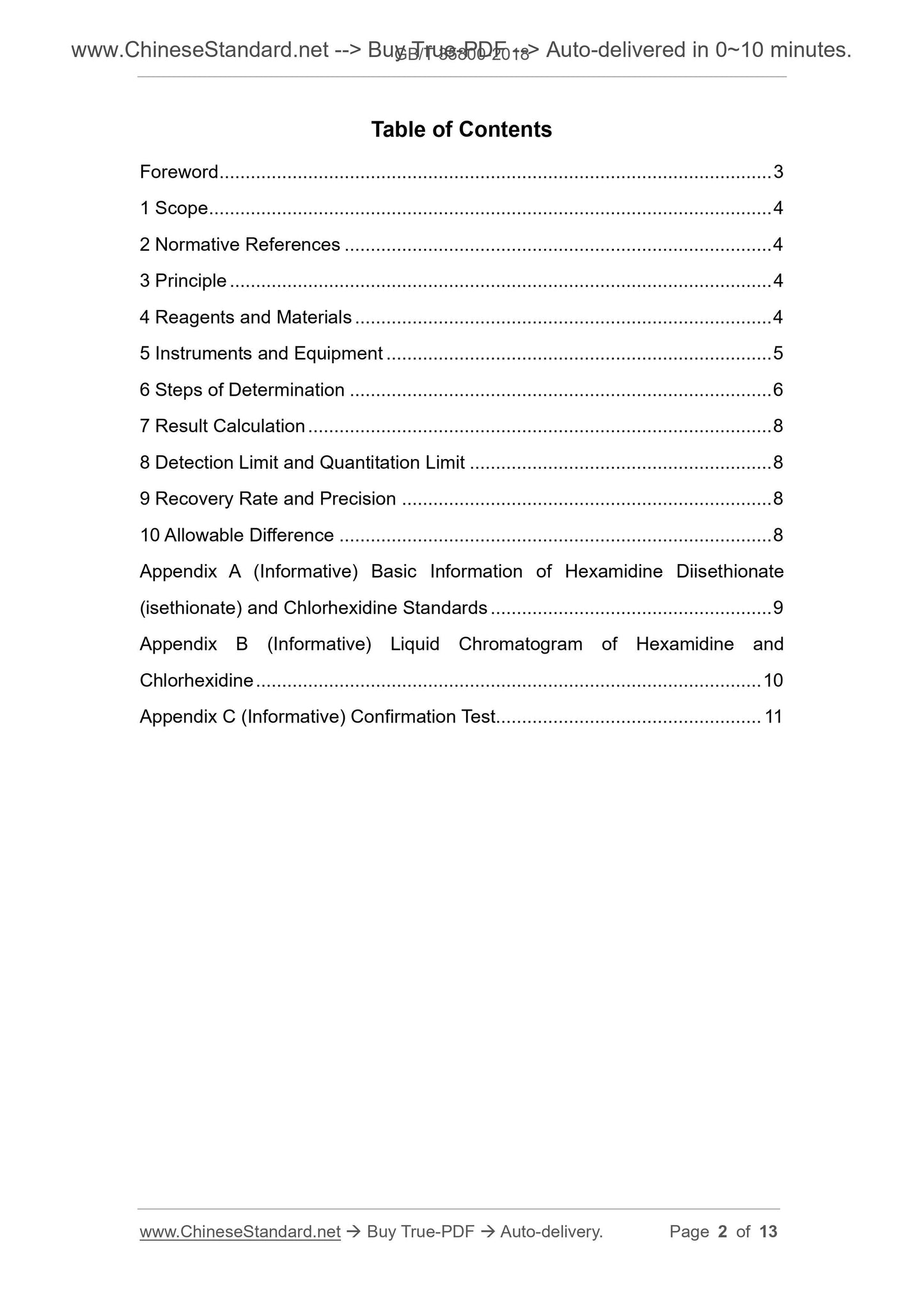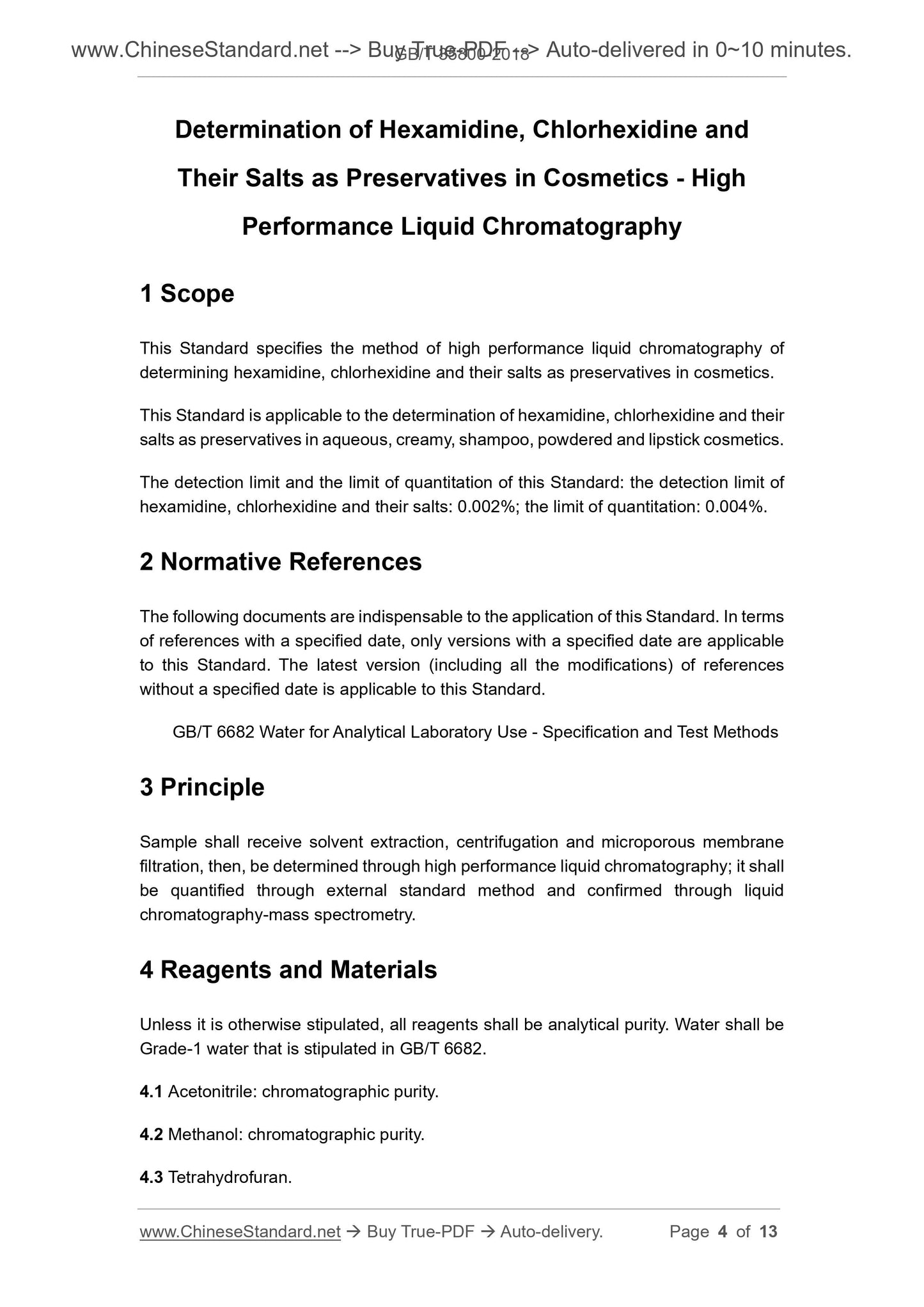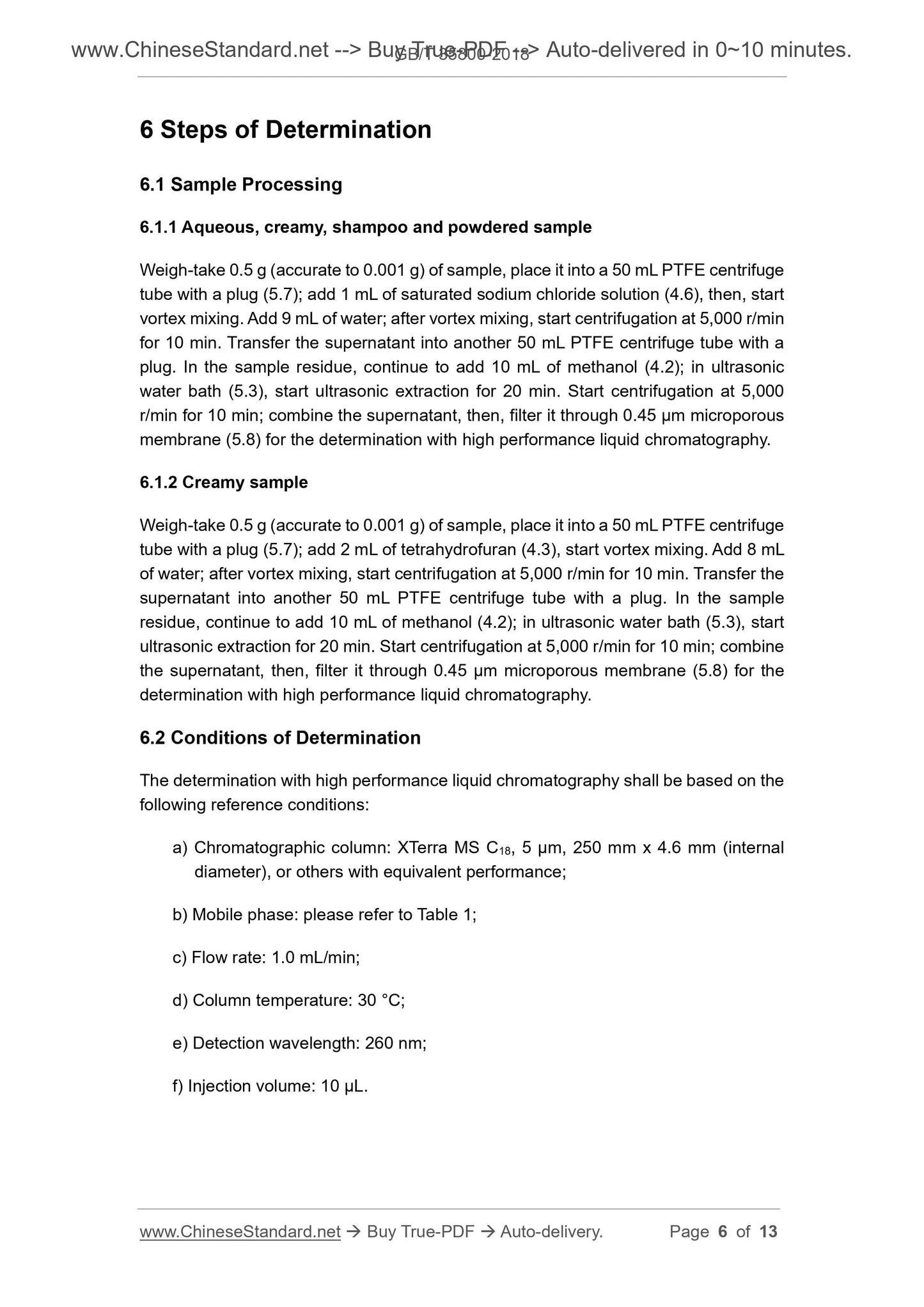1
/
of
5
www.ChineseStandard.us -- Field Test Asia Pte. Ltd.
GB/T 35800-2018 English PDF (GB/T35800-2018)
GB/T 35800-2018 English PDF (GB/T35800-2018)
Regular price
$150.00
Regular price
Sale price
$150.00
Unit price
/
per
Shipping calculated at checkout.
Couldn't load pickup availability
GB/T 35800-2018: Determination of Hexamidine, Chlorhexidine and Their Salts as Preservatives in Cosmetics - High Performance Liquid Chromatography
Delivery: 9 seconds. Download (and Email) true-PDF + Invoice.Get Quotation: Click GB/T 35800-2018 (Self-service in 1-minute)
Newer / historical versions: GB/T 35800-2018
Preview True-PDF
Scope
This Standard specifies the method of high performance liquid chromatography ofdetermining hexamidine, chlorhexidine and their salts as preservatives in cosmetics.
This Standard is applicable to the determination of hexamidine, chlorhexidine and their
salts as preservatives in aqueous, creamy, shampoo, powdered and lipstick cosmetics.
The detection limit and the limit of quantitation of this Standard. the detection limit of
hexamidine, chlorhexidine and their salts. 0.002%; the limit of quantitation. 0.004%.
Basic Data
| Standard ID | GB/T 35800-2018 (GB/T35800-2018) |
| Description (Translated English) | Determination of Hexamidine, Chlorhexidine and Their Salts as Preservatives in Cosmetics - High Performance Liquid Chromatography |
| Sector / Industry | National Standard (Recommended) |
| Classification of Chinese Standard | Y42 |
| Classification of International Standard | 71.100.70 |
| Word Count Estimation | 10,126 |
| Date of Issue | 2018-02-06 |
| Date of Implementation | 2018-09-01 |
| Issuing agency(ies) | State Administration for Market Regulation, China National Standardization Administration |
Share









